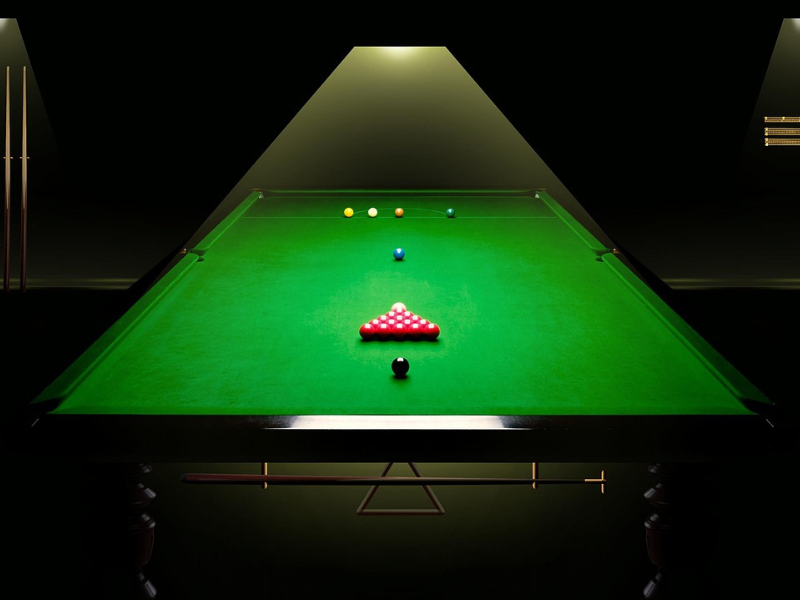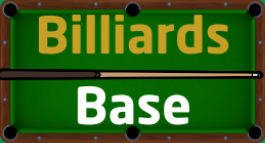
Understanding snooker rules can feel overwhelming and complex. But, it’s easier than it looks.
Snooker stands as one of the world’s most captivating cue sports, combining precision, strategy, and mental fortitude in a way that has enthralled audiences for over a century. Born in the British Army clubs of India during the 1870s, the game’s evolved into a globally televised sport with millions of fans.
Let’s break it down.
The Official UK Snooker Rules Overview
The World Professional Billiards and Snooker Association (WPBSA), based in the United Kingdom, maintains the official rules of snooker used in professional competitions globally.
These standardised regulations ensure consistency whether you’re playing at your local club or watching the World Championship. In the most basic example, they’ll set the standard snooker table size, which means you’ll more than likely have always played on the same sized table when out practicing. Read our guide on snooker table set up if it’s something you’re expecting to do soon.
Objective of the Game
The fundamental goal in snooker is straightforward: score more points than your opponent by potting balls in the correct order. Players take turns attempting to pocket balls, earning points for successful shots and gaining additional points when opponents commit fouls.
A frame (equivalent to a game) ends when all balls are potted or when one player concedes. A match consists of multiple frames, with the winner being the first to win a predetermined number (e.g., “best of 7 frames” means first to win 4).
Table Layout & Equipment
The snooker table features specific markings and designated spots for colored balls:
- Baulk line: A line across the table 29 inches from the bottom cushion
- D-area: Semicircle within the baulk area where cue ball starts
- Colored ball spots: Fixed positions for yellow, green, brown (on baulk line), blue (center), pink, and black balls
At the start of each frame, 15 red balls form a triangle near the black spot, while colored balls occupy their designated spots.
Step-by-Step: How to Play Snooker

Learning snooker becomes manageable when broken into clear, sequential steps.
Here’s how a frame unfolds from start to finish.
The Break-Off and Opening Shots
Every frame begins with the break-off shot. The player who wins the coin toss or lag chooses whether to break first. The cue ball starts anywhere within the D-area, and the player must strike a red ball.
Break-off procedure:
- Place the cue ball anywhere in the D-area
- Strike any red ball (the 15 reds clustered near the black spot)
- At least one ball must hit a cushion after the cue ball contacts a red
- Play passes to your opponent if you don’t pot a ball or commit a foul
The opening shot sets the tone for the frame, with players often playing safely rather than attempting aggressive pots. Learning how to break in snooker is easy enough, just takes practice! Learning how to do it well, on the other hand, that takes a bit more practice.
Legal Shots and Potting Order
Snooker follows a strict alternating sequence: red ball first, then any colored ball, repeat until all reds are gone, then colors in ascending order.
During the red ball phase:
- Must pot a red ball first
- If successful, choose any colored ball (yellow through black)
- Colored balls are respotted after being potted
- Continue until all 15 reds are potted
During the colored ball phase:
- Pot balls in order: yellow (2), green (3), brown (4), blue (5), pink (6), black (7)
- Colored balls stay down when potted
- No respotting during this phase
What makes a shot legal:
- Cue ball must contact the correct target ball first
- A ball must hit a cushion after contact OR a ball must be potted
- Player must not touch any balls except the cue ball with the cue tip
- At least one foot must remain on the floor during the shot
Scoring System Snooker Rules
Points accumulate through successful pots and opponent fouls. Understanding the point values is crucial:
Ball Values:
- Red balls: 1 point each
- Yellow: 2 points
- Green: 3 points
- Brown: 4 points
- Blue: 5 points
- Pink: 6 points
- Black: 7 points
Foul points: When a player commits a foul, their opponent receives between 4-7 points depending on the severity. The minimum penalty is 4 points, but if a higher-value ball is involved, the penalty equals that ball’s value.
Maximum possible break: 147 points (15 reds with 15 blacks = 120, plus all colors in sequence = 27 additional points).
End of Frame and Match
A frame concludes when:
- All balls are legally potted
- A player concedes (acknowledges they cannot win)
- The margin becomes mathematically impossible to overcome
Winning conditions:
- Whoever has more points when all balls are potted wins the frame
- In professional snooker matches, players typically play “best of X frames”
- If scores are tied after all balls are potted, the black ball is respotted for a sudden-death conclusion
Common Rules and Fouls Beginners Should Know

Understanding frequent fouls helps beginners avoid penalties and play more confidently. Here are the most common infractions:
Major fouls and penalties:
- Missing the target ball entirely: 4+ points to opponent
- Potting the cue ball: 4+ points to opponent, cue ball returns to D-area
- Hitting wrong ball first: Points equal to highest value ball involved
- Touching any ball apart from legally striking the cue ball: 4+ points minimum
- Both feet off the floor: 4+ points to opponent
- Playing out of turn: 4+ points to opponent
- Push shot (cue tip contacts ball twice): 4+ points to opponent
Quick Do’s and Don’ts:
DO:
- ✅ Check which ball you need to hit before shooting
- ✅ Ensure cue ball hits target ball first
- ✅ Keep at least one foot on the floor
- ✅ Wait for balls to stop moving before shooting
DON’T:
- ❌ Touch any balls with hands, clothing, or cue shaft
- ❌ Shoot before opponent’s turn ends
- ❌ Play quick shots without considering safety
- ❌ Forget to call your intended ball when unclear
When fouls occur, points go to the non-offending player, and they may gain additional advantages like ball in hand (placing the cue ball anywhere) in certain situations.
Advanced & Special Snooker Rules (Brief Overview)
As you develop your snooker knowledge, you’ll encounter more complex rules that add strategic depth:
The Miss Rule: When a player fails to make a reasonable attempt to hit the target ball, the referee may call a “miss,” allowing the opponent to have the balls replaced and the shot replayed.
Free Ball: When a player is snookered after an opponent’s foul, they may nominate any ball as the target ball, which temporarily adopts the value of the required ball.
Snookers: Tactical situations where the target ball cannot be hit directly, forcing opponents to play off cushions or attempt difficult shots.
Respotted Black: If the scores are tied when only the black remains, it’s respotted and the first to pot it (or force a foul) wins the frame.
These advanced concepts develop naturally through playing experience and watching professional snooker.
Regional Differences: UK vs. International Rules
The beauty of snooker lies in its standardization. The WPBSA rules, originating in the UK, are universally adopted for professional competitions worldwide.
Whether you’re playing in Sheffield, Shanghai, or Sydney, the fundamental rules remain consistent.
Minor regional variations may exist in:
- Amateur club rules (some clubs modify rules for shorter games)
- Local tournament formats
- Recreational play variations
However, any serious snooker competition follows WPBSA guidelines. This consistency is one reason snooker translates so well across cultures and maintains its global appeal.
Snooker Rules Quick Reference
Essential Rules Checklist:
Objective: Score more points than opponent by potting balls correctly
Sequence: Red → Color → Red → Color (until reds gone) → Colors in order
Ball Values: Red-1, Yellow-2, Green-3, Brown-4, Blue-5, Pink-6, Black-7
Foul Minimum: 4 points (or value of highest ball involved)
Frame Ends: All balls potted OR player concedes
Match Winner: First to predetermined number of frames
Frequently Asked Questions (FAQs)
What is Snooker?
Snooker is a cue sport played on a large rectangular table covered with green baize, using one white cue ball and 21 colored object balls. Unlike pool or billiards, snooker requires players to pot balls in a specific sequence while accumulating points through successful shots and opponent fouls.
The game originated in 1875 when British Army officer Sir Neville Chamberlain combined elements of black pool and pyramids, creating what would become modern snooker. The name allegedly comes from the military slang “snooker,” meaning a newly joined cadet—a novice, much like players felt when first encountering this challenging game.
Key Equipment:
- Table: 12ft × 6ft (3.7m × 1.8m) with six pockets
- Balls: One white cue ball, 15 red balls (1 point each), 6 colored balls (yellow-2, green-3, brown-4, blue-5, pink-6, black-7 points)
- Cue: Wooden stick, typically 57-59 inches long
What are the basic rules of snooker?
The fundamental objective is to pot red balls (worth 1 point each) alternating with colored balls (worth 2-7 points) until all 15 reds are cleared from the table. Once all reds are potted, players must pot the colored balls in ascending order: yellow (2), green (3), brown (4), blue (5), pink (6), and black (7). During the red ball phase, colored balls are respotted after being potted, but during the final sequence, they remain in the pockets. The player with the most points when all balls are cleared wins the frame. Players take turns, and play continues until a shot is missed or a foul is committed.
How is snooker different from pool or billiards?
Snooker differs significantly from pool and billiards in several key ways. The snooker table is much larger at 12ft × 6ft compared to pool’s typical 9ft × 4.5ft tables. Snooker uses 22 balls total (1 white cue ball, 15 reds, and 6 colored balls) while most pool games use either 15 balls (8-ball) or 9 balls (9-ball). The scoring system is more complex, requiring specific potting sequences and offering varying point values. Unlike pool, where players typically aim to clear their designated group, snooker demands alternating between reds and colors with precise positional play. The strategic depth and longer frame duration also distinguish snooker from the generally faster-paced pool games.
What’s the highest possible break in snooker?
The maximum possible break in snooker is 147 points, known as a “maximum break” or “perfect game.” This is achieved by potting all 15 red balls, each followed by the black ball (15 × 8 = 120 points), then clearing all colored balls in sequence: yellow (2), green (3), brown (4), blue (5), pink (6), and black (7), totaling 27 additional points. This requires exceptional skill, as the player must maintain perfect position throughout the entire sequence without missing a single shot. Maximum breaks are rare achievements in professional snooker and are celebrated as the sport’s equivalent of a perfect game.
What counts as a foul in snooker?
Snooker fouls occur in various situations, with the minimum penalty being 4 points awarded to the opponent (or the value of the highest ball involved, whichever is greater). Common fouls include: potting the cue ball (in-off), completely missing the target ball, hitting the wrong ball first (such as hitting a colored ball when a red is required), touching any ball except the cue ball with the cue, clothing, or body, playing with both feet off the floor, or playing a push shot where the cue tip contacts the ball twice. Players also commit fouls by playing out of turn, moving balls accidentally, or failing to play away from touching balls correctly.
Is there a difference between UK snooker rules and international rules?
There are no significant differences between UK and international snooker rules. The World Professional Billiards and Snooker Association (WPBSA), based in the UK, maintains the official rules that are universally adopted for all professional competitions worldwide. Whether you’re playing in Sheffield, Shanghai, or Sydney, the fundamental rules remain identical. Minor variations may exist in some amateur club settings or local recreational play, but any serious tournament or professional competition follows the standardized WPBSA guidelines. This consistency ensures that snooker maintains its global appeal and allows players to compete internationally without rule adjustments.
Your Journey into Snooker Begins
Understanding snooker rules transforms watching matches from confusion into appreciation of tactical brilliance. The interplay between potting, safety play, and positional control creates a chess-like strategic depth that keeps players and spectators engaged for hours.
Your next steps:
- Visit a local snooker club – Most clubs welcome beginners and offer equipment rental
- Watch professional tournaments – Understanding rules makes commentary much more meaningful
- Practice basic techniques – Start with straight pots and simple safety shots
- Study frame patterns – Notice how professionals construct breaks and control the cue ball
Remember, even Ronnie O’Sullivan and other famous snooker players were once beginners struggling with the rules. Every expert started with the fundamentals covered in this guide.
The green baize awaits – your snooker journey starts now!
- Read our guide on the best snooker cues to stay informed of your options
- Learn about the differences between pool and snooker for some interesting, light reading
